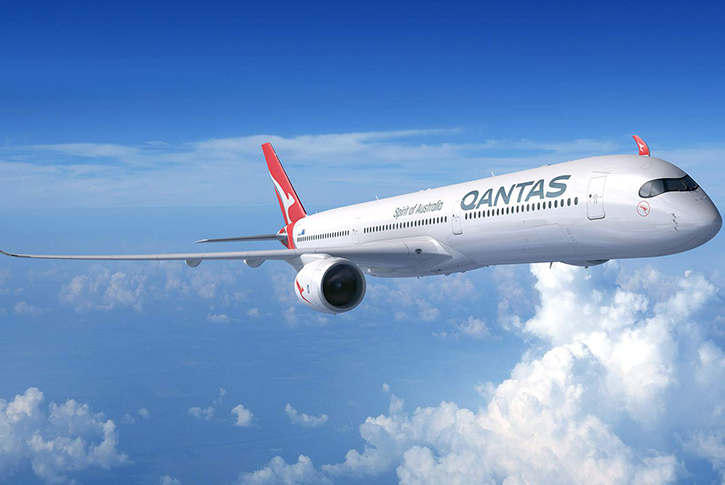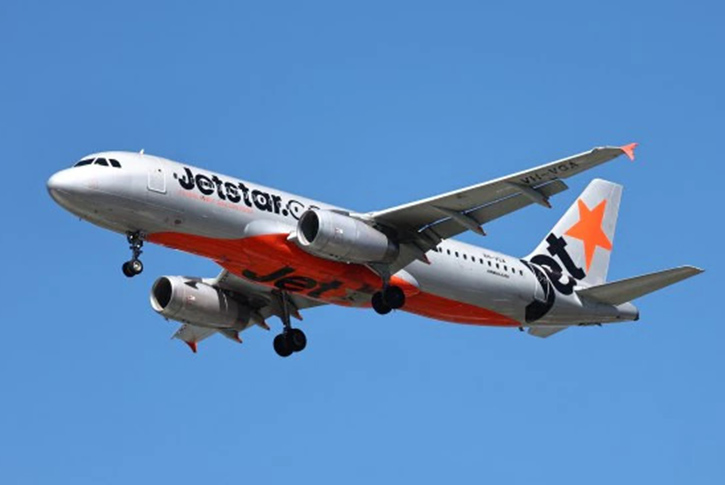Flying from Cairns to Darwin: Flight Time, Cost, and Booking Tips
- by Filip

Australia’s northern frontier is a land of contrast, and few journeys capture this better than the flight from Cairns to Darwin. Stretching across Queensland and the Northern Territory, this route not only spans geography, but brushes against the edges of the tropical and the outback, the humid and the arid, the reef and the red earth.
Embarking on this leg of travel offered insights that went well beyond the inflight announcements and tray-table instructions. There is a rhythm to traveling between these two cities—a pulse shaped by flight schedules, seasonal prices, and the gentle tug of logistics. This post is an exploration of that rhythm, a guide grounded in firsthand experience and detail.
1. Choosing the Route: Why Not Drive?
A natural question arises when plotting a route between Cairns and Darwin: why not make it a road trip? After all, a cross-country drive in Australia promises cinematic horizons and hidden gems. The answer comes quickly in kilometers—over 2,400 of them—and in driving hours, clocking in at around 30 non-stop, which in reality would spread over several days.
Fuel prices alone would rival the cost of a one-way airfare, especially for solo travelers. Add in accommodation along the Stuart and Savannah Highways, the mental fatigue of outback driving, and the occasionally unreliable mobile signal, and flying begins to look less like a luxury and more like a smart logistical choice.
2. Distance and Duration in the Air
The direct air distance between Cairns and Darwin measures approximately 1,700 kilometers (about 1,050 miles). In terms of flight duration, most direct flights take between 2.5 and 3 hours. Actual time in the air tends to hover around 2 hours and 40 minutes, depending on wind patterns and the specific flight path used that day.
Boarding, taxiing, and disembarking at both airports easily stretch the overall time commitment to around 4 to 5 hours from airport arrival to terminal exit on the other end. Factoring in transportation to and from each airport, the whole travel process comfortably fills half a day.
3. Flight Options and Carriers
The route is serviced primarily by Jetstar, Virgin Australia, and occasionally Qantas. Each of these carriers offers direct flights, though frequency varies based on season and demand.
- Jetstar operates budget-friendly services with fewer frills, usually once or twice a day depending on the season.
- Virgin Australia offers a more balanced experience with competitive pricing and a few added comforts.
- Qantas maintains higher fares but also tends to offer better customer service, included baggage, and complimentary meals, which softens the price tag somewhat.
During peak travel months (June through September), flights fill quickly and more departures are added to meet the demand. In shoulder seasons (April–May, October–November), availability is stable but more limited. Summer months (December to March), with their intense humidity and frequent storms, may see sudden schedule changes or cancellations.

4. Ticket Prices and What Affects Them
Airfare on this route varies widely. Booking well in advance can secure fares in the range of AUD $120–$180 one way, particularly with Jetstar. Closer to the date, or during holiday periods and regional festivals, fares can climb to AUD $300 or more.
Several factors influence this fluctuation:
- Seasonality – Dry season (May–October) sees an influx of tourists to both Cairns and Darwin. Prices increase accordingly.
- Day of the Week – Midweek flights (Tuesday and Wednesday) are often cheaper than weekend departures.
- Time of Day – Red-eye flights or early morning departures usually cost less, though the inconvenience is a tradeoff.
- Class and Add-ons – Economy tickets are the norm, but adding baggage, choosing seats, or upgrading to flexible fare classes adds incrementally to the total.
Promotional sales are frequent, especially from Jetstar, so subscribing to airline newsletters or fare-tracking tools proves useful.
5. Booking Tips That Make a Difference
Booking flights may seem as easy as tapping a few buttons, but finding good fares between Cairns and Darwin involves more strategy than luck. Several tactics made the process smoother and more cost-effective:
- Use Multiple Aggregators: Websites like Skyscanner, Google Flights, and Momondo each display different price combinations and route structures. Cross-checking across them prevents overpaying.
- Book Two One-Way Tickets: Occasionally, two separate one-way fares booked with different carriers cost less than a single round-trip booking.
- Consider Nearby Airports: While both cities only have one commercial airport each, it’s worth checking whether special deals extend to nearby towns, though in this case, it rarely yields alternatives due to the remoteness of both regions.
- Set Price Alerts: Most aggregators offer this feature. Setting alerts two to three months ahead yields good results.
- Use Airline Apps: Booking through an airline’s official app often unlocks app-only discounts or loyalty benefits.
- Travel Light: Budget carriers charge extra for checked baggage. Traveling with only carry-on can cut up to AUD $50 off the total cost per flight.
6. The Airport Experience: Cairns Departure
Cairns Airport, while modest in size, is efficient and clean. Its domestic terminal features a handful of cafés, newsstands, and souvenir shops. Security lines move at a steady pace, and the signage is intuitive. Check-in desks for Jetstar and Virgin are clearly marked, and staff are usually cheerful, if occasionally a bit rushed during busy periods.
There are no jet bridges for most domestic flights, so boarding often involves a brief walk across the tarmac, which adds a certain open-skies charm to the departure. In the early morning, this means stepping out into the golden sunlight rising over Trinity Bay—a far cry from the concrete tunnels of larger city airports.
7. The Inflight Experience
Jetstar and Virgin both operate Airbus A320s on this route, offering similar seating layouts—three on each side, relatively tight legroom, and minimal recline. Jetstar’s experience is strictly no-frills; food and drink are available for purchase, and entertainment is limited to what passengers bring on their own devices. Virgin offers a touch more comfort, with complimentary tea, coffee, and basic snacks.
The flight path offers little in the way of views until descent, when the vast floodplains and billabongs of the Northern Territory begin to unfurl below like giant veins carved into the land.
8. Arrival in Darwin
Darwin International Airport feels more like a regional airport than a capital city terminal—but that’s part of its charm. The arrival process is quick, with luggage appearing within 10 to 15 minutes. Exiting into the tropical air of the Top End, one is immediately struck by the heat and humidity, even in the early morning or late evening.
Transportation options include taxis, rideshare services, and a handful of shuttle buses. The airport is only 15 minutes from the city center, making arrivals and transfers refreshingly straightforward.
9. Navigating Time Zones and Jet Lag
Cairns and Darwin are in different time zones for part of the year. Darwin operates on Australian Central Standard Time (ACST), while Cairns follows Australian Eastern Standard Time (AEST). The difference is usually 30 minutes, which, while minor, is worth noting when booking connecting travel or appointments upon arrival.
Jet lag isn’t an issue for this flight. However, arriving during Darwin’s midday heat or high humidity can produce a kind of climate shock, especially after an air-conditioned flight. It pays to dress in breathable fabrics and drink plenty of water before and after the flight.

10. Climate Considerations
Flying from Cairns to Darwin might suggest a continuation of tropical weather, but the climates are notably distinct. Cairns has a wet season with heavy rains and an oceanic breeze from the Coral Sea. Darwin, on the other hand, presents a dry season that is almost desert-like in intensity, interspersed with a thunderous wet season that shuts down entire streets.
When flying during the wet season (December to March), expect delays due to storms—particularly in Darwin. It’s not uncommon for airlines to reroute or reschedule during monsoonal activity, so travel insurance with weather protection is worth considering.
11. Final Thoughts on Timing the Journey
The best time to fly between Cairns and Darwin is during the dry season, which runs from May to October. The weather is more predictable, skies are clearer, and the Top End comes alive with festivals, outdoor markets, and national park accessibility.
Departing Cairns early in the morning or arriving in Darwin just before sunset provides the added bonus of seeing both cities in their golden-hour glory, which makes even a short domestic hop feel like an occasion.
12. Useful Travel Apps and Resources
Several apps and platforms proved useful in planning and executing the flight:
- FlightAware: To track flight paths and arrival times in real-time.
- Airly: For monitoring regional fare drops and availability.
- Rome2Rio: Helpful for mapping transportation to and from both airports.
- BOM Weather: Australia’s Bureau of Meteorology app, essential for real-time weather and storm warnings.
- Uber: Widely available in both cities and often cheaper than taxis.
13. Additional Notes on Flexibility and Delays
Flights between Cairns and Darwin are generally reliable, but weather disruptions do happen—particularly during the wet season. Carriers often accommodate delays without significant hassle, but flexibility in travel plans is essential. It’s advisable to leave some buffer time before any connecting travel or major appointments.
Also, during regional holidays or large events such as the Darwin Festival, air traffic increases and hotel availability tightens, so pairing flight booking with accommodation confirmation is a wise move.
Australia’s northern frontier is a land of contrast, and few journeys capture this better than the flight from Cairns to Darwin. Stretching across Queensland and the Northern Territory, this route not only spans geography, but brushes against the edges of the tropical and the outback, the humid and the arid, the reef and the red…
Recent Posts
- Darwin’s Seafood Feast: An Epicurean Trail Through the Top Sea-to-Plate Restaurants
- Tropical Natural Wonders: Exploring the National Parks Around Darwin
- Darwin Harbour Odyssey: Where History, Scenery, and Vessels Converge
- Flying from Cairns to Darwin: Flight Time, Cost, and Booking Tips
- Cairns Family-Friendly Hotel: A Perfect Stay for the Whole Family